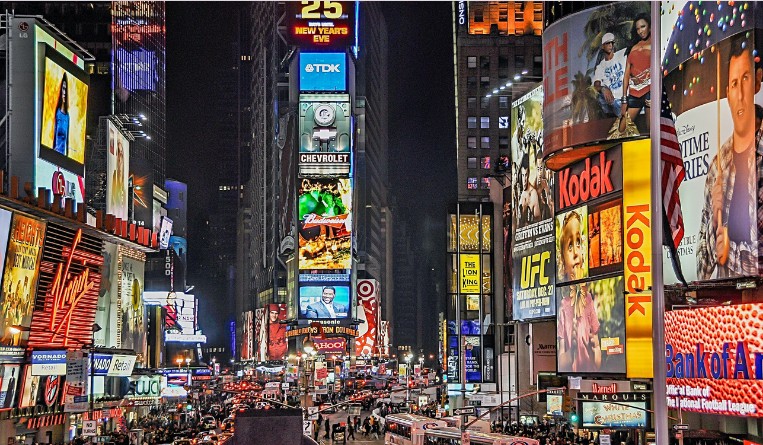Comparative advertising: Drawing the fine line between puffery and disparagement
28 October 2021

Comparative advertisement refers to a marketing and promotional strategy whereby an entity’s products or services are presented as superior in comparison to a competitor’s by drawing the advantages of one’s products over the competitors’ products either directly or indirectly. In such, cases, often the products of the competitors, including the trademarks/trade dress, are depicted in full or part in order to draw comparisons, thereby involving the use of trademarks/trade dress of the competitor’s products and may raise issues related to the rights subsisting with such competitors in their trademark(s) and/or trade dress.
Section 30 of India’s Trade Marks Act, 1999 excludes certain acts which shall not be construed to be acts of infringement. Under Section 30(1), the use of a registered trademark by any person for the purposes of identifying goods or services as those of the proprietor is allowed provided the use (i) is in accordance with honest practices in industrial or commercial matters, and (ii) is not such as to take unfair advantage of or be detrimental to the distinctive character or repute of the trademark.
Therefore, comparative advertisement might fall within the scope of Section 30(1), and may be deemed to be fair use of trademarks, provided that it is not directed at taking unfair advantage of the distinctive character and repute of the trademark. The courts in India have discussed the scope of comparative advertising and extent of fair use therein in various cases, some of which have been discussed in the table below in brief:
|
S. No. |
Case |
Relevancy |
|
1. |
Reckitt & Colman of India v. M. P. Ramachandran 1999(19)PTC741(Cal) |
The judgment took note of certain English judgments and provided the following propositions relating to comparative advertisement under Section 30(1): I) A tradesman is entitled to declare his goods to be best in the world, even though the declaration is untrue. |
|
2. |
Hindustan Unilever Ltd. v. Reckitt Benckiser 2014(57)PTC78(Cal) |
The court noted that a trader is permitted to compare his goods with those of another trader. He can make this comparison by highlighting the qualities and efficaciousness of his goods without stating or commenting on the qualities and efficaciousness of his rival’s goods and that such a kind of comparative advertisement conceptualised in Section 30 of the Trade Marks Act, 1999. But the provision warns that such depiction shall not, inter alia, be unfair or detrimental to the “repute” of the trademark. A trader should not be permitted to advertise facts, data, figures, deficiencies etc. of the products of another, especially a rival, directly or indirectly by an innuendo. |
|
3. |
PepsiCo v. Hindustan Coca Cola Ltd. 2003(27)PTC305(Del) |
To decide the question of disparagement we have to keep the following factors in mind, namely;
Out of the above, “manner of the commercial” is very important. If the manner is ridiculing or condemning the product of the competitor, then it amounts to disparaging, but if the manner is only to show one’s product better or best without derogating other’s product, then that is not actionable. |
|
4. |
Dabur India v. Wipro Ltd. |
It was held that in comparative advertising, a consumer may look at a commercial from a particular point of view and come to a conclusion that one product is superior to the other, while another consumer may look at the same commercial from another point of view and come to a conclusion that one product is inferior to the other. Disparagement of a product should be defamatory or should border on defamation, a view that has consistently been endorsed by this court. In other words, the degree of disparagement must be such that it would be tantamount to, or almost tantamount to, defamation. |
|
5. |
Reckitt & Colman of India v. Kiwi TTK |
The court observed that the settled law on the subject appears to be that a manufacturer is entitled to make a statement that his goods are the best and also make some statements for puffing of his goods and the same will not give a cause of action to other traders or manufacturers of similar goods to institute, proceedings as there is no disparagement or defamation to the goods of the manufacturer so doing. However, a manufacturer is not entitled to say that his competitor’s goods are bad so as to puff and promote his goods. It, therefore, appears that if an action lies for defamation an injunction may be granted. |
|
6. |
SABMiller India v. Som Distilleries |
The court observed that the provisions of Section 30(1) protects the use of a registered trademark in comparative advertisement, i.e. when the defendant uses the plaintiff’s registered trademark to indicate the plaintiff’s goods and not as the defendant’s goods, but to show the difference between the goods of the plaintiff and the goods of the defendant. |
|
7. |
Tata Sons Ltd. v. Greenpeace International |
The court held that infringement of a trademark is said to take place when another commercial/entrepreneurial body is exploiting that same trademark. However, the use of such trademark for a critical comment, or even attack, doesn’t result in infringement. |
In view of the statutory provision of the Trademarks Act, 1999 along with the above-discussed case law, it can be concluded that the extent of fair use of trademark under Section 30 of the Trademark Act, 1999 is restricted to the use of the trademark only for comparison with one’s product, provided that the trademark is not shown in a bad light or is not defamed or demeaned in any manner whatsoever. In order to claim defence of comparative advertising the person or entity making use of the trademark(s) of the other(s) has to ensure that the sole intent behind using the said trademark or product of any other entity is to draw comparison of their own products, without causing any adverse or negative association with the said trademark.









